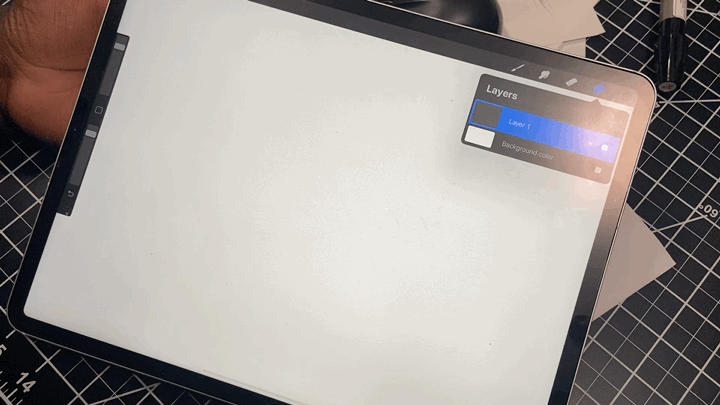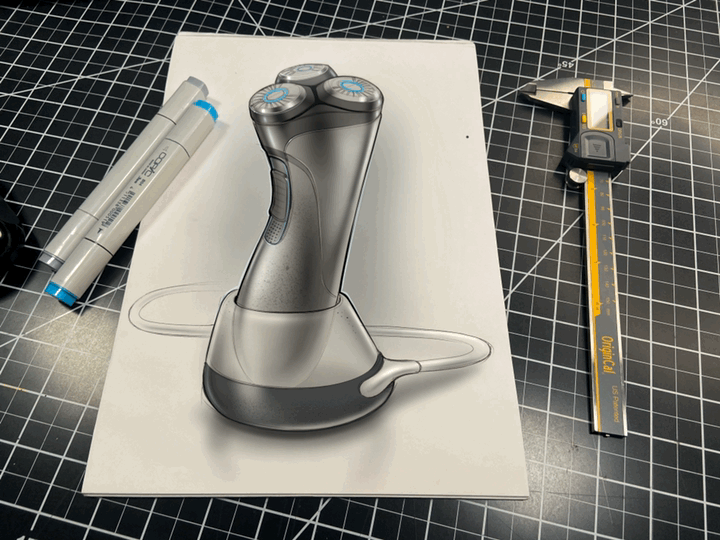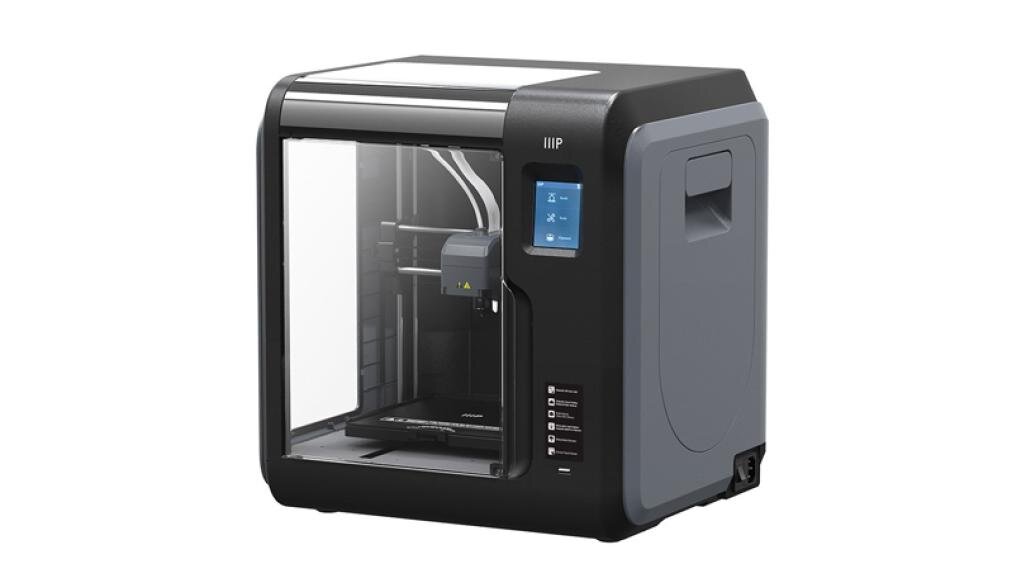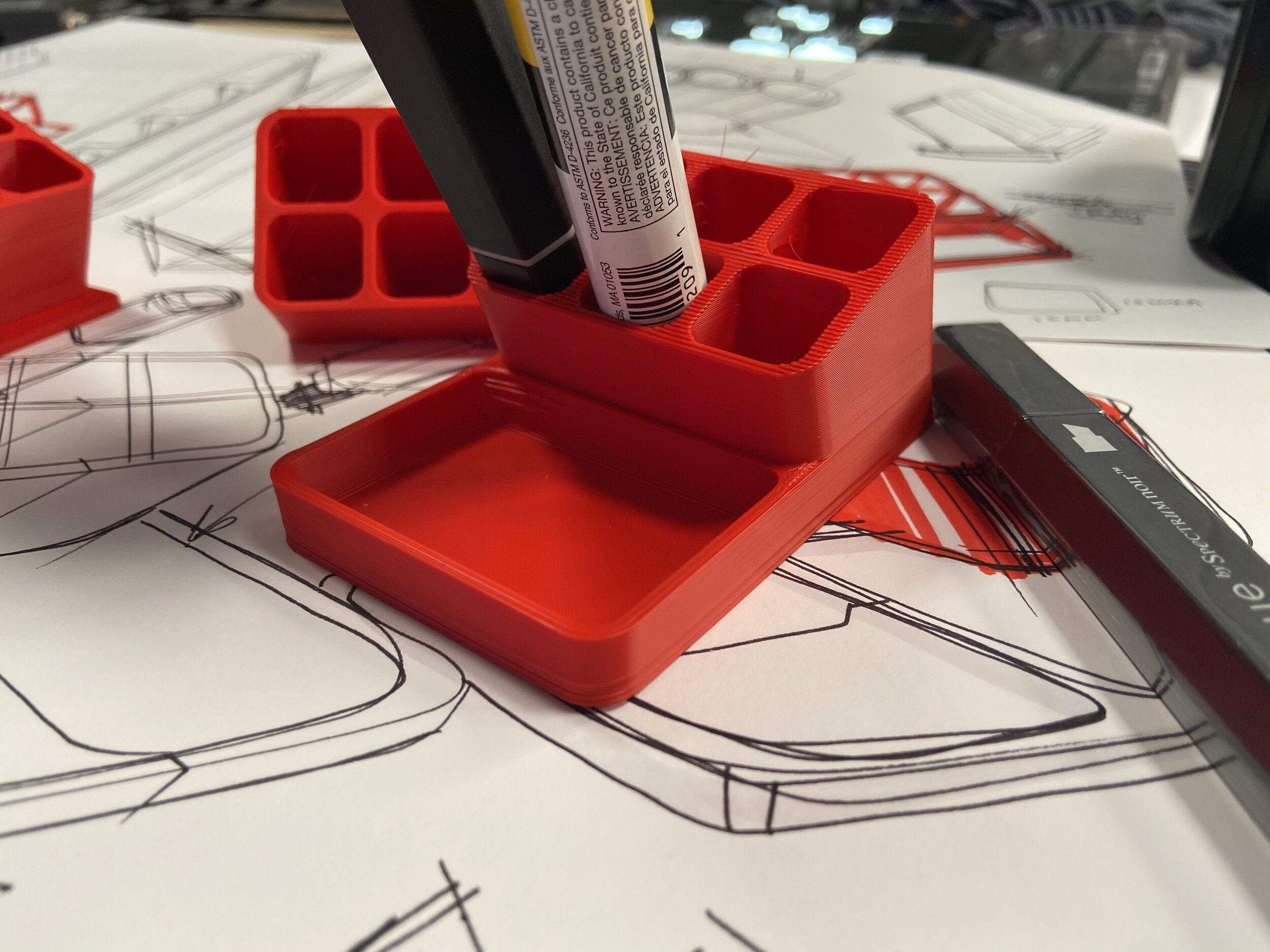Advanced Design Interview and Discussion with Brett Lovelady
This week, thanks to Hector Silva of Advanced Design, I had the chance to sit and chat with Brett Lovelady, founder of the world class design firm, Astro Studios, and I had a blast catching up, but also reminiscing a bit.
Years ago in college, I was walking in the hallway of the junior studio when my professor at the time said, “hey do you have portfolio ready?” Fortunately, I did! I’d worked on a small teaser portfolio, not anticipating that I would apply for an internship then. I was a sophomore and at my college at the time, student’s didn’t typically go on internships in their second year — the foundational skills were still being set like wet concrete. Talk about timing!
My professor said a company called Astro Studios was hiring. At the time, I had no idea about the adventure ahead and what it would mean for my whole life. There was a catch, though… the internship would last 6 weeks. “The summer isn’t six weeks”, I thought to myself. What then? I accepted the offer and set off to get ready to head to San Francisco. It didn’t help that I was broke and at the time had to fork over money for some damage I had caused to a friends vehicle. I didn’t even know where I was going to live!
When I got to Astro Studios, I was told that there was no desk for me, like the other interns who would be coming to replace me in a few weeks. No worry though. No egos hurt. I was determined to make the BEST of the time I had there, I remember working hard and giving it my best. I was the bagel guy and recycling intern as well! I wanted to show them that I was more than just the filler. So, I sat at the conference table with my supplies being mentored by some of the best designers San Francisco had to offer, of whom I still consider dear friends and astro “family”.
In the mean time, I was working on an enhanced portfolio and applying to other internships. I heard from Target in Minneapolis and received an offer. This was a few weeks into my internship, and I remember speaking with my friend and co-worker, Ian Myles, about it. He said to me upon hearing my intention to leave, “why are you leaving? WE LOVE YOU”. Brett Lovelady also emphatically wanted me to stay — he has been a mentor and help for much of my career as well as a friend and supremely positive influence in my life.
I’m grateful for the chance I had to co-host this discussion on Advanced Design. Check it out!
The uncanny valley of design sketching
Note: The original opinion piece contained images referencing the subject matter, with credit. To avoid further conflict, I have removed said images, but stand by the main point of the piece, that it seems odd to me to manipulate ones work in this way.
What is real anymore?
I started sketching almost two decades ago and much has changed. I saw the digital revolution coming but what I did not anticipate was how hard it would prove to discern a real sketch from one heavily augmented by drawing asset tools or being able to figure out whether a sketch was really done on paper or not. This time, I did not imagine.
No “quickline”, just real skill
What I’m referring to is a somewhat pervasive trend on social media that I’ve noticed designers and design students propagating — taking a photo and staging digital sketches into reality to suggest one skillfully executed the sketch in context, as well as hyper-style-punching a sketch in context using digital compositing tools.
I’ve written articles and even produced video content on the purpose of types of sketches, but these leave me scratching my head and wondering WHY? What’s the purpose of this strange new type of sketching? Well, not so much WHY as I wonder, “do you realize what you’re doing?”. You can peep that video here below in the notes (bottom of the article).
The Augmented Designer
What is skill? Where does proficiency begin and end? When it comes to digital sketching, the line is being erased, not blurred, when it comes to needing to maintain a certain level of proficiency to create informative, emotional, presentation and ideation sketches.
I foresee a future in which the designer becomes the curator, and less the executor in a low-level sense. More on this topic another time, but with tools like Procreate on iPad Pro, Adobe Fresco and Autodesk sketchbook pro implementing quick-draw assist tools and a slew of guides, the fine tuning of skill is becoming less needed in one’s career.
At the same time, although we do have these tools at our disposal as designers and illustrators, I have still found in these stages of my career that I need to be able to not rely on these drawing aids so that I can sketch on the fly, in-situ with a client or other designers. If you get too used to these tools, they can become a crutch upon which you depend to do all your work. That being said, your mileage may vary. A great way to have a good idea is to explore a lot of them, and a great way to explore ideas is to visually communicate quickly. Using tools to create picture perfect layouts can be problematic and misrepresent the rawness of the design process.
Mixed reality sketching and hyper-shopping are two trends that I think lean a bit too heavily into presentation and lack a few things that make traditional industrial design sketching engaging, informative and provocative.
Mixed Reality Sketching
Mixed reality sketching is what I’m identifying as the trend of digitally compositing a sketch onto real paper or other media. Sometimes these sketches are even composted with real tools, suggesting the work was done with real pencils, markers pens and so forth.
The premise seems disingenuous and confusing to the uninitiated trying to learn the process of design. While they look appealing, I question the reasoning behind the sketches being presented this way. After some thought and consideration, I came to the realization that our reality itself has been bent, warped and altered by the existence of social media.
Social media, along with advanced technology tools, platforms, ecosystems and the almighty algorithm has given rise to the “influencer” culture where moments and content are synthesized and staged to produce the most “likes”.
Historically (and I’m being generous here) a “like” represents some measure of validation and “goodness”. For design and illustration, however, a “like” is a very shallow measure of value or merit in response to your work. A like requires little to no effort and offers nothing by way of critique, thought, feedback or means for improvement. Occasionally a creator will receive feedback through comments, but such feedback is more reminiscent of a congratulatory echo chamber celebrating the novelty in presentation and skipping the critique of content. And if not, such critique is so extreme that it touches on insult.
Perhaps a silver lining in the current Covid-19 crisis is the decline of influencer culture to some extent and the crisis seems to be a forcing function for more authenticity in the world. Design sketching may very well need to also lean into authenticity in presentation and approach.
What’s disturbing about this trend for me is that there seems to be deceit at the premise of the presentations of the idea. Sure, the idea may have some substance at its core, but to suggest that the presentation was executed in-situ, by hand, is egregious and bereft of integrity.
Digital sketches placed in context alongside markers - there is a magic pen, after all!
As I’ve considered the trend, I’ve also thought that perhaps a driver or reason for such presentations is to market one’s skills as a designer or “design-astrator” - to cut through the noise of content and attract fans for more “likes”. With that potential motive in mind, the trend makes complete sense! The presentations are attractive and intriguing, but entirely for the wrong reasons. Again, if I’m marketing an image as being representative of my skills and capabilities, compositing sketches that are clearly done digitally onto pads of real paper at the beach, your favorite sporting event or other equally unlikely scenario is disingenuous at best.
“Hyper-shopping”
Another trend I’ve observed is what I’m calling the hyper-shop. Take photo of a pen or pencil sketch, place it into your favorite photo editing tool or mobile drawing suite and apply highlights, shadows, textures, reflections and elements to make it POP, all while maintaining the context for the sketch, complete with markers, pencil shavings, or other analog tools.
Oft times, without indication, these hyper stylized sketch-renderings are posted, again, with the implication that this was done by hand, in-situ, HASHTAG NO FILTER.
I tried to make one for myself. It felt… odd, but still, a fun exercise.
What’s problematic here, is while an experienced designer can spot the “weirdness” in the presented juxtaposition of analog and digital processes that ignores transparency of process and muddies reality, the social media appeal and like-fest is a quick hit validation of sorts for the work.
This is democracy at its worst.
Example of context added to a sketch, in this case, implausible.
Influence
Whether you like it or not, at a certain point on social media, we all become “influencers”. When your fan base grows and more people look up top you, by default, you become a standard bearer for best practices or representative skills in your field.
In the summer 2019 Innovation magazine, Hector Silva, IDSA and head of the Advanced Design organization writes:
“As designers who use Instagram as an unofficial portfolio platform, it’s our responsibility to be honest and straightforward about the content we post—for the sake of fostering a healthy design community and to provide the appropriate knowledge and expectations to aspiring designers who could be our future colleagues. “
I wholeheartedly agree with the sentiment expressed here. You should also take some time to check out the rest of the article.
I recognized this years ago when I started IDSKETCHING and sketchaday as online properties. People look to me for advice on sketching, I host workshops and a 3 times weekly live presentation to teach people correct processes for sketching and developing ideas. Because of that, I have to make sure I do things correctly. I’m not perfect in my understanding or execution, however I do take seriously my responsibility to communicate the correct information to my “students” and observers as much as possible.
I’ve also learned to be open to feedback when I am wrong, and I do hope that those following this trend will participate in the conversation and be open to making changes that present their work in a more authentic light.
Does it matter?
Another designer and friend of mine, Michael DiTullo, recently said something interesting in an interview on Core 77 that resonated with me — A rendering is a statement and a sketch is a conversation — I’ve had similar thoughts about sketching throughout my career as being a conversation on paper, sometimes with yourself, but oft times with others.
I’ve pondered this question over and over. Does it really matter if designers are presenting their work online in an authentic way? The answer for me is… maybe.
I can see the validity of creating buzz and marketing hype around yourself as a designer, but at what cost? If you’re not being authentic and forthright in the representation of your skills in a medium that is traditionally regarded as a measure of skill and the ability to communicate ideas, what then? What of the representation or misrepresentation inherent to the work as presented? A potential employer may be drawn in by your work, but that expectation for that level quality delivered in a timely manner, doesn’t often square up with real life in a real professional setting.
In conclusion, I do think that fundamentally, anything we do as designers should come from a place of honesty, transparency, authenticity and integrity and these sketches do not represent those key qualities to me.
Let’s keep it real.
Making A Marker Caddy
Is this thing on? Wow. It’s been a minute.
I have a love affair with markers and pens. It’s a problem. in fact, there should likely be some service to help people like me with an addiction to writing implements. I dee a marker, I get curious and I want to try it out for myself. But, really, as you know, I just love drawing.
Forever in the pursuit of things that make my life simpler, at the risk of adding complexity, I decided to set out and design and make my own mini marker caddy. Why? Well of the 300 plus markers I own, I feel as though there are a few that I regularly use and just want handy on my desk. The rest can remain in cold storage as they have been. If you want to know more about how I store those markers, check out this video. There’s even some lively debate in the comments about the best way to store markers and keep them fresh and perky.
I started by sketching some doodles and thumbnails. I set out for something pure and mostly unadorned besides a few affordances for fillets. I’d be using my new Monoprice voxel printer. I say new, but what I mean to say is that it is new to me. I just purchased a refurbished unit and have been really happy with it. Sure, for 250 USD it has MANY quirks, but being able to make prototypes in my kitchen (it’s actually below my microwave) has been amazing.
The resulting first attempt turned out to be a colossal failure. This is why prototyping and testing is important.
Sometimes you can fall in love with the look of an idea only to find that it was flawed in its very premise.
Physics are real and sometimes we designers rush forward without regard for reality. it’s okay to dream, but there comes a time when you have to wake up and think through things.
Seeing that my holder wouldn’t hold a marker without toppling over, I decided to start iterating and making a few tweaks. I added a small foot to the front and tweaked the angle of approach for the markers, hoping that this would reduce the moments of force and also add some much needed stability. For the print, I was using ABS plastic filament and I noticed a few things I can touch on here.
There was some noticeable warping of the prototype print. After some experimentation, I discovered that I was printing with the wrong setting — it’s actually a miracle that the print survived, because my printer was set to PLA, a resin that melts at a much lower temperature. In addition to that observation, because of the nature of the construction of the part, I found that where plastic walls met, there was noticeable shrinkage, much like one would find with thick injection molded parts. Another reminder of the reality of physics.
I also think the machine, being as small as it is, is more susceptible to vibrations and aberrations than a larger, more sturdy printer, and as such, there were some skips in the layering of the file.
Again, however, I can’t complain much for 250 USD. I remember purchasing a 3d printer a few years ago for about 1500 USD and the quality, reliability and results weren’t nearly as lovely as what this printer produces.
Back to the second test… The print was mostly successful, however, I still noticed it wasn’t stable enough for me to use consistently without being concerned that my markers would topple the thing over.
Back to the drawing board, and I made another tweak. This time, I added a longer extension foot to the base, and so as to prevent extra warping, added the side walls on the foot to form a tray on the front. I often have smaller items at my desk like pushpins for sketches as well as small SD cards for data storage on cameras and thought this small tray would be good to have as an added functional area.
The print was a success — I ran a rough pass first which means the resolution of the print was much lower and took considerably less time than it would otherwise. That gave me the chance to quickly see the result, make a confirmation and print another.
Learnings:
Physics is here to stay! don’t forget to consider functional mechanical implications of your design
Work quickly - I didn’t spend much time sketching. This is how I typically work if I have an idea in my head. Refinement comes later in the process and certainly varies from project to project.
Have fun - when I’m having fun, I do my most precise and simple work. your attitude and outlook are just as important as putting pen to paper or clicks to CAD.
Project Assets:
If you’d like to print a a version of this yourself, i’ve provided links to a STEP file as well as each version of the caddy if you’d like to tinker yourself. Consider making a donation if you do, but more importantly, share your knowledge with others!












